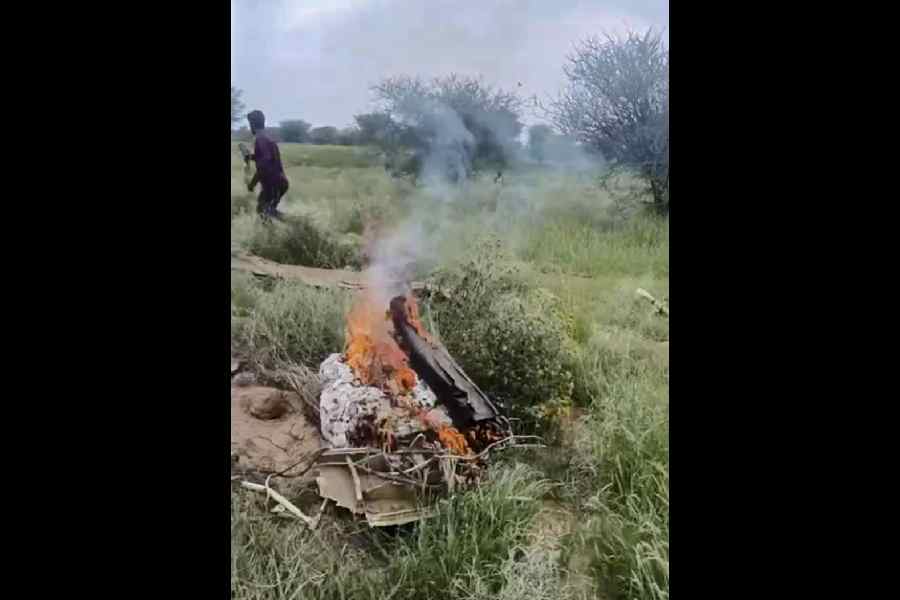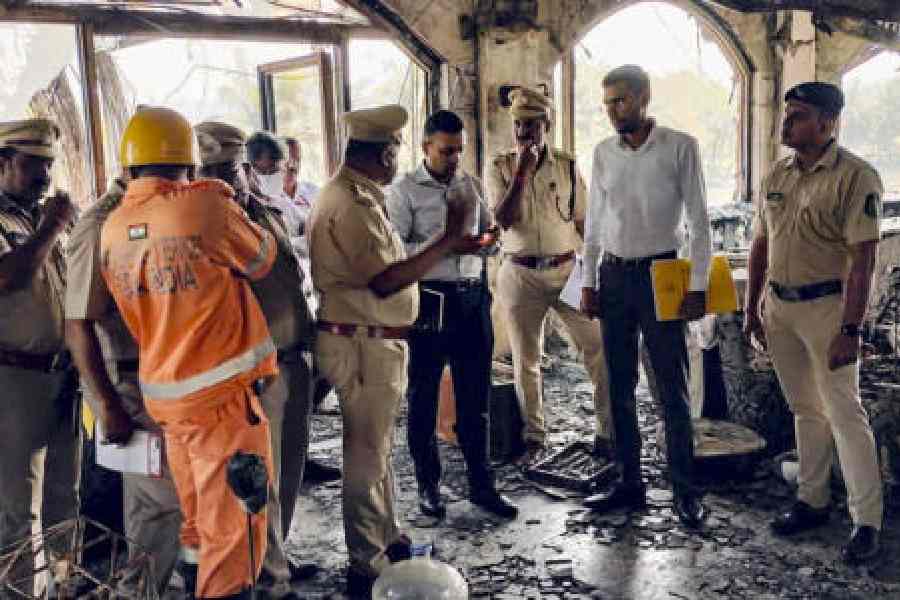Two Indian Air Force (IAF) pilots were killed after a twin-seater Jaguar fighter aircraft on a routine sortie crashed near Bhanoda village in Rajasthan’s Churu district on Wednesday.
This was the third Jaguar crash in the past four months.
The Jaguar, a British-French supersonic fighter jet, was inducted into the IAF in 1979 and was reportedly past its expiry date. The IAF is the only major air force in the world that still operates this low-flying fighter bomber, with many other countries having consigned the aircraft to museums.
“An IAF Jaguar trainer aircraft met with an accident during a routine training mission and crashed near Churu in Rajasthan today. Both pilots sustained fatal injuries in the accident. No damage to any civil property has been reported,” the IAF said in a statement on Wednesday.
A court of inquiry has been constituted to ascertain the cause of the accident.
“The IAF deeply regrets the loss of lives and stands firmly with the bereaved families in this time of grief,” the statement said.
Sources said the fighter jet crashed in an agricultural field in Bhanuda village around 1.25pm. The wreckage of the aircraft was found in a severely damaged condition.
“Body parts of the two pilots were found scattered near the crash site,” said a Rajasthan police official.
The villagers reported hearing a loud noise, followed by flames and smoke rising from the fields, which triggered panic in the area.
In March, a Jaguar aircraft crashed at Ambala in Haryana during a routine training sortie after encountering a system malfunction. The pilot had manoeuvred the aircraft away from any habitation on the ground before ejecting safely.
A month later, another twin-seater Jaguar trainer aircraft crashed near Jamnagar in Gujarat. Of the two pilots onboard, one died.
The Jaguar is a twin-engine fighter bomber with single and twin-seat variants. It is widely used by the IAF. First inducted in the late 70s, it has been heavily upgraded over the years.
It is estimated that approximately 110-120 Jaguar jets are currently operational in the IAF.
A mainstay of the IAF, the jets are primarily used for ground attack roles.The IAF has planned to gradually phase them out by 2031 and replace them with the Tejas Mk1A, being made by Hindustan Aeronautics Limited (HAL).
“Jaguars are deep penetration strike fighters and all of them are currently being upgraded with modern radar systems and engines to prolong their service life,” said an IAF official.
Veterans have in the past flagged the risks of flying these ageing and obsoleteaircraft, which are endangering both personnel and mission readiness. Sourcessaid the past mishaps involving Jaguars had pointed to engine failure.
Several countries such as Britain, France, Ecuador and Oman, which once had Jaguars in their fleet, have retired them long ago, with some jets put on display in their respective air museums.
Around 65 to 70 per cent of the IAF’s fighter aircraft are Russian, and most of them either need urgent upgrades or are on the verge of retirement. Having foreign aircraft also means staying dependenton other countries for parts and components.










